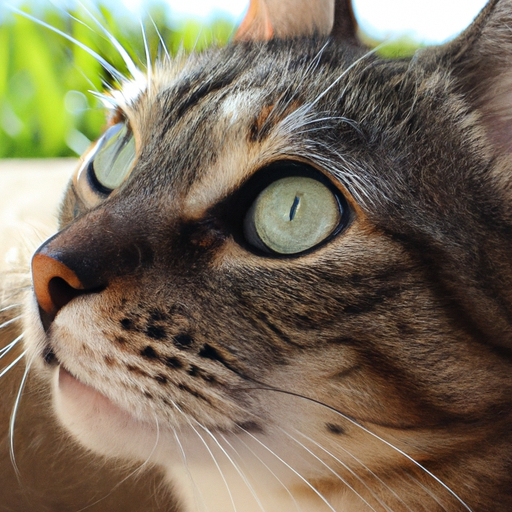How Long Are Cats In Heat?
You’re curious about how long cats go into heat, aren’t you? You’re not alone. This is a commonly asked question, especially by cat owners. Indeed, understanding the reproductive cycle in felines can be crucial, particularly if you’re not planning on breeding your pet.
Female cats, particularly if they aren’t spayed, go into heat for about a week every few weeks, typically during the warmer months. So, on average, they can be in heat for up to a full week, possibly even a little longer in some instances. During this period, your cat’s behavior may change – she may be more affectionate, vocal, or restless, which are all signs that she’s in heat.

Understanding Cat’s Heat Cycle
The intricacies of a cat’s life are quite fascinating, and one of the phases that completely transforms their behavior is their heat cycle. So, what does this mean, and why is it essential to understand?
Definition of a Cat’s Heat Cycle
A cat’s heat cycle, also referred to as the Estrous Cycle, is a period when the female cat, or queen, is receptive to mating and can become pregnant. It is not menstruation, as some might think; rather, it is a phase certain hormonal changes prompt, thereby preparing a cat’s body for possible pregnancy.
How a Heat Cycle Begins
The cat’s heat cycle doesn’t just abruptly occur. It’s a gradual process initiated by increased daylight – specifically, when the cat is exposed to at least ten hours of daylight continuously. The surging light levels trigger hormonal changes, prompting the release of eggs from ovaries, leading to the onset of the estrous cycle.
Factors Affecting a Cat’s Heat Cycle
Numerous components affect a cat’s heat cycle. The breed and age of the cat play a huge role, but other factors like her health, environmental conditions, and presence or absence of male cats can adjust or determine the cycle’s frequency and duration.
Signs and Symptoms of a Cat in Heat
Understanding the signs and symptoms of a cat in heat can save both you and your furry friend a lot of discomfort.
Behavioral Changes in a Cat
Behavioral changes are one of the most noticeable symptoms. When in heat, your cat might become more affectionate, frequently rub against you, furniture, or other objects. She might display certain mating behaviors, like assuming a mating position or excessively grooming her genital area.
Physical Signs of a Cat in Heat
Physically, there might not be visible signs like bleeding or swelling. However, she may frequently urinate or have increased vocalization, often confused with distress or illness.
How Long the Signs and Symptoms Last
The signs and symptoms don’t last indefinitely. Generally, they might persist for about a week but could also stretch up to two weeks in some cats. If you don’t breed your queen, she may enter the heat cycle again within just a week or two.
Duration of a Cat’s Heat Cycle
The frequency and duration of a cat’s heat cycle can vary considerably.
Average Duration of a Cat’s Heat Cycle
On average, a queen experiences her heat cycle for a week to ten days. It may, however, last anywhere from three days to two weeks, varying from one queen to another.
Factors Affecting the Duration of a Cat’s Heat Cycle
Factors like breed, age, health condition, and living conditions, such as stress levels and the presence or absence of a male cat, can influence the cycle’s duration.
Variation in Different Cat Breeds
Different cat breeds have different estrous cycle lengths. Some breeds such as Siamese cats are known to have longer heat cycles, while others may have shorter cycles.
Periods Between Heat Cycles
Periods between heat cycles are called interestrus.
What Happens Between Heat Cycles?
Intestrus is a rest phase that occurs if the queen isn’t bred. Her body temporarily halts reproductive activities, though she won’t display signs of a heat cycle.
Length of Break Between Cycles
This period can last anywhere from just a few days to a couple of weeks, depending on various factors such as the queen’s health conditions and surrounding environment.
Changes in Cat Behavior Between Heat Cycles
During this rest period, your cat will likely resume her usual behavior. She wouldn’t display any of the typical signs associated with her heat cycle.

Age and the Cat’s Heat Cycle
A cat’s age plays a significant role in her reproductive life.
At What Age Does a Cat Begin to Experience Heat Cycles?
Most cats begin experiencing heat cycles when they reach sexual maturity, typically around six months of age. However, some might start as early as four months or as late as a year.
Relation between the Cat’s Age and Cycle Frequency
A younger, healthy cat will likely have more frequent heat cycles than an older, less healthy one. The frequency of heat cycles tends to decrease as cats age.
How Age Affects the Duration of the Heat Cycle
Just like frequency, age significantly impacts the duration of the cycle. Younger cats tend to have longer and more frequent cycles while older cats have shorter and less frequent cycles.
Breeding and the Cat’s Heat Cycle
A queen’s heat cycle is closely related to her breeding activities.
Ideal Time for Breeding During the Heat Cycle
The ideal time for breeding is when your queen is at the peak of her estrus, which often happens a few days after her cycle begins. This is when she is most willing to mate and most likely to get pregnant.
How Breeding Affects the Heat Cycle
Breeding can impact the frequency and length of a queen’s heat cycles. If she becomes pregnant, her heat cycles will temporarily stop until after she gives birth and nurses her kittens.
Possibility of Pregnancy During the Heat Cycle
Yes, your queen can absolutely become pregnant during her heat cycle. In fact, this is the only time she can get pregnant.
Health Risks Associated with the Heat Cycle
Heat cycles can have several effects on a queen’s health.
Health Problems Associated with Frequent Heat Cycles
Frequent estrous cycles without pregnancy can lead to conditions like uterine infections or mammary cancer in some queens.
Impact of the Heat Cycle on a Cat’s Overall Health
Continuous heat cycles could lead to issues like malnutrition and weight loss, weakening the cat’s overall health.
Preventing Health Issues During the Heat Cycle
To curb any potential health issues, ensure a nutritious diet and regular vet visits. Some pet parents opt for spaying to end the heat cycles entirely.
Managing a Cat in Heat
Managing a cat in heat can be a challenging task for a pet owner.
How to Calm a Cat in Heat
Provide a quiet, comfortable space and try to minimize any changes in routine or environment. Some queens may benefit from extra attention and petting.
Dealing with Behavioral Changes
Understanding your cat’s behavioral changes can help manage her more efficiently. Remember, patience is key.
When to Seek Veterinary Help
Seek veterinary help if your queen appears to be in pain or if you notice any unusual symptoms.
Preventing the Heat Cycle in Cats
Heat cycles can be prevented to save both your cat and yourself from any potential discomfort or harm.
Benefits of Spaying Your Cat
Spaying your cat not only prevents heat cycles but also shields her from potential health risks associated with continuous cycling.
The Best Time to Spay a Cat
The best time to spay your cat is before her first heat cycle, though she can be spayed at any age after that. It’s best to consult with a vet for an optimal decision.
Alternatives to Spaying
Alternatives to spaying include giving hormonal drugs to control heat cycles or using an intrauterine device. However, these methods have their own risks and are not frequently recommended.
Understanding False Heat in Cats
False heat in cats is a phenomenon that pet owners need to be aware of.
What is False Heat?
False heat refers to the situation where a spayed cat displays signs of being in heat. It usually happens when some ovarian tissue is inadvertently left behind during surgery.
Symptoms of False Heat in Cats
Symptoms of false heat are similar to a regular heat cycle. They could include behavioral changes such as increased affection, vocalization, or sudden interest in male cats.
Managing and Preventing False Heat
While false heats can be confusing and frustrating, they can be managed easily with the assistance of a vet. Preventing false heat involves ensuring complete removal of ovarian tissue during spaying. In case of any left-behind tissue, secondary surgery might be required.
In conclusion, understanding your cat’s heat cycle can have a significant impact on how you care for her during this time. Patience, understanding, and ample love will make this journey easier for both of you. After all, a well-treated queen is more likely to be a happy, healthy queen.







